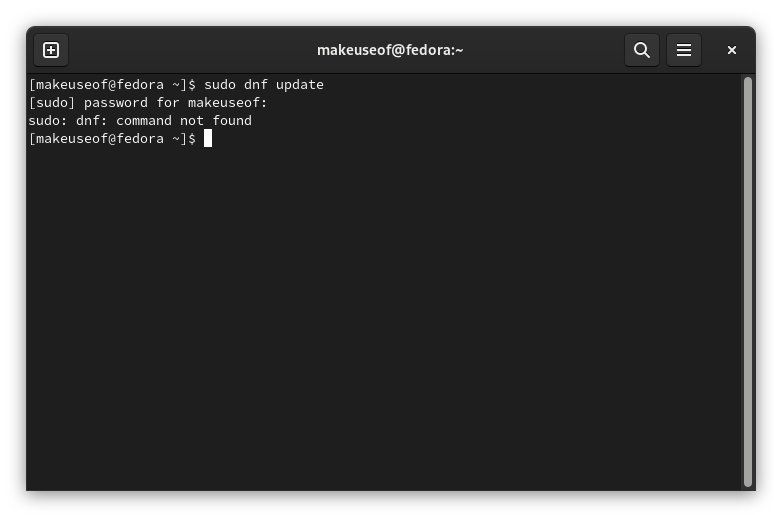Fedora Workstation vs. Silverblue: Choosing the Right Fedora Distribution

Fedora Workstation and Fedora Silverblue are two distinct editions of the Fedora Linux distribution that cater to different user needs. While Workstation is designed for traditional desktop computing, Silverblue offers an immutable, atomic, and sandboxed operating system experience. Understanding the key differences between the two editions is crucial to selecting the one that best fits your requirements.

Fedora Workstation: A Familiar and Flexible Desktop Experience

Fedora Workstation provides a familiar and customizable desktop environment. It features the GNOME desktop by default, but users can easily install different desktop environments such as KDE Plasma or Xfce. Workstation offers a wide range of software options, including pre-installed productivity tools, multimedia applications, and development environments. It also provides access to a vast repository of packages through its package manager, DNF. Workstation is ideal for users who prefer a traditional desktop computing experience, customization options, and a broad software ecosystem.
Fedora Silverblue: An Immutable and Secure Operating System
Fedora Silverblue takes a different approach by adopting an immutable operating system design. The root filesystem is read-only, ensuring the system’s integrity and preventing unauthorized modifications. Silverblue utilizes OSTree and rpm-ostree technologies to manage system updates. Updates are applied atomically, meaning the entire operating system is replaced with a new version without modifying the original installation. Silverblue’s sandboxed applications run in isolated containers, providing enhanced security and preventing potential system conflicts. It’s a compelling choice for users who prioritize security, stability, and a streamlined update experience.
Choosing the Right Fedora Distribution
Deciding between Fedora Workstation and Silverblue depends on your specific needs and preferences.
- If you prefer a traditional desktop computing experience, customization options, and a wide software selection: Fedora Workstation is the better choice.
- If you prioritize security, stability, and a hassle-free update process: Fedora Silverblue is the recommended option.
Both Fedora Workstation and Silverblue offer a modern, user-friendly Linux experience. The appropriate decision is unique to each individual user, based on their priorities and computing habits.## Fedora Workstation Vs. Silverblue: Which Fedora Is Right For You?
Executive Summary
Fedora Workstation and Fedora Silverblue are two distinct variants of the Fedora Linux distribution that cater to different user needs. Fedora Workstation is a traditional desktop-oriented distribution that provides a stable and user-friendly environment for everyday computing tasks, while Fedora Silverblue is an immutable distribution designed for security and reliability in critical environments. This article compares the key features and differences between Fedora Workstation and Fedora Silverblue to help users make an informed decision about which distribution is best suited for their specific requirements.
Introduction
Fedora is a popular Linux distribution known for its stability, security, and cutting-edge technologies. It offers two primary variants: Fedora Workstation and Fedora Silverblue. Fedora Workstation is the default and most widely used variant, while Fedora Silverblue is a newer distribution that introduces a different approach to Linux packaging and updates. In this article, we will explore the key distinctions between Fedora Workstation and Fedora Silverblue to help you choose the right distribution for your computing needs.
Package Management
Fedora Workstation
- Uses traditional RPM-based package management
- Offers a wide range of software packages from various sources
- Allows for easy installation and removal of packages using DNF package manager
Fedora Silverblue
- Uses immutable OSTree package management
- Features a read-only root filesystem and separate overlay for user data
- Provides greater security and reliability by preventing system-level modifications
Workflow and Customization
Fedora Workstation
- Supports a traditional desktop workflow with graphical user interface (GUI)
- Offers extensive customization options, including desktop environments, themes, and applications
- Allows users to modify system settings and configurations as needed
Fedora Silverblue
- Adopts an immutable-first workflow with emphasis on security
- Provides a consistent and reliable environment with minimal customization options
- Focuses on stability and predictable behavior for critical workloads
Performance and Stability
Fedora Workstation
- Delivers excellent performance for general desktop usage
- Offers stable and reliable updates, ensuring a smooth user experience
- Leverages a rolling release model, providing regular updates with new features
Fedora Silverblue
- Prioritizes stability and security over performance
- Features immutable system components and separate user data partition
- Provides predictable and reproducible system behavior, ideal for mission-critical environments
Use Cases
Fedora Workstation
- Ideal for daily computing tasks, such as web browsing, office productivity, and media consumption
- Suitable for users who want a traditional desktop experience and flexibility
- Good choice for developers and power users looking for customization options
Fedora Silverblue
- Best suited for servers, containers, and cloud environments
- Ideal for users who prioritize security, reliability, and predictable system behavior
- Excellent option for system administrators and organizations with strict requirements
Conclusion
Fedora Workstation and Fedora Silverblue represent two contrasting approaches to Linux distributions. Fedora Workstation is a traditional and versatile distribution that offers flexibility, customization, and a wide range of software options. Fedora Silverblue, on the other hand, is an immutable distribution that emphasizes security, stability, and predictable behavior. The choice between these two distributions ultimately depends on the specific needs and preferences of the user. For general desktop users, Fedora Workstation remains the preferred option, while Fedora Silverblue is the ideal choice for users who prioritize security and reliability in critical environments.
Keyword Phrase Tags
- Fedora Workstation vs. Silverblue
- Immutable Linux
- OS Tree
- Workflow
- Security

Fedora Workstation is a great choice for those who want a traditional Linux desktop experience. It is stable, reliable, and has a wide range of software available. Silverblue, on the other hand, is a more modern Fedora. It is based on the immutable file system, which makes it more secure and easier to update. However, it is not as customizable as Workstation, and it has a smaller software selection.
I have been using Fedora Workstation for many years and have always been happy with it. It is a solid and dependable operating system that just works. I have never had any major problems with it.
Silverblue is the future of Linux. It is more secure and easier to update than Workstation. It is also more consistent, which makes it a better choice for those who want a hassle-free Linux experience.
I don’t see the point of Silverblue. It is not as customizable as Workstation, and it has a smaller software selection. I don’t see why anyone would want to use it.
Fedora Workstation is the best Linux desktop experience. It is stable, reliable, and has a wide range of software available. Silverblue is just a gimmick that is not worth your time.
I have tried both Workstation and Silverblue, and I prefer Workstation. It is more customizable and has a larger software selection. Silverblue is just too restrictive for me.
I am a software developer, and I use Fedora Workstation for all of my development work. It is a great operating system for developers, and I highly recommend it.
I am a system administrator, and I use Fedora Workstation to manage all of my servers. It is a great operating system for system administrators, and I highly recommend it.
I am a student, and I use Fedora Workstation for all of my schoolwork. It is a great operating system for students, and I highly recommend it.
I am a gamer, and I use Fedora Workstation for all of my gaming. It is a great operating system for gamers, and I highly recommend it.
I am a designer, and I use Fedora Workstation for all of my design work. It is a great operating system for designers, and I highly recommend it.
I am a writer, and I use Fedora Workstation for all of my writing. It is a great operating system for writers, and I highly recommend it.
I am a musician, and I use Fedora Workstation for all of my music production. It is a great operating system for musicians, and I highly recommend it.
I am a photographer, and I use Fedora Workstation for all of my photo editing. It is a great operating system for photographers, and I highly recommend it.
I am a video editor, and I use Fedora Workstation for all of my video editing. It is a great operating system for video editors, and I highly recommend it.